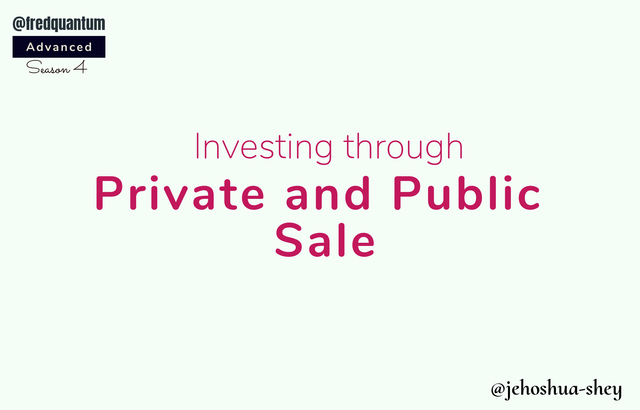

Q.1. What can you say about Crypto Investment and how to properly utilize the investment tools available to make the right decisions?

These days, people don't have to get special training to identify a money farm. Solely working hard is slowly becoming a sign of ignorance. Infact, the advice has shifted from "work hard" to "ask your financial adviser". This is because innovations in technology has created new platforms for buying and selling.
In today's world, most of the physical goods and services have adopted digital forms, with the rest opting for virtual reality. Funny as it sounds, people now build houses and buy lands on the internet. These properties are then sold like they are physical properties.
Amidst this barrage of innovation is an investment opportunity that fails to provided a limited lost of testimonials. It's a mathemagical concept developed from a combination of mathematics and digitalized financial models. It was christened "Crypto".
CRYPTO AS AN INVESTMENT OPPORTUNITY
Ease, returns, genuinity, security, scalability,... just name it, it's most probably present on the list of the advantages of investing in crypto. Infact, you only have to "ask your financial adviser" and "do your diligent research" which sometimes, is as easy as searching "Top crypto prospect this year" on Google.
To invest in crypto, you basically needn't anything but money, emails, mobile phone numbers and an internet enabled device with an internet connection. Platforms like Kucoin and Huobi lets you roll without KYC.
Where to invest also comes with low risk options like perennially profitable projects like Bitcoin and Ethereum. Keep your nose on the ground and you'll probably sniff out the next AXS or SOL and turn your $10 into $1500.
To think that keeping you keys private means even your government can't touch your asset makes crypto sound like a safe haven. And if you want to scale your investment, it's only a question of "by how much?".
USING INVESTMENT TOOLS TO MAKE THE RIGHT DECISION
Okay, now you've heard that someone could put in $10 and get $1500 from a crypto asset and there's an idle $100 in your possession and you're begin to do the maths... Wait a minute, you can also lose 90% of your funds through bad decisions so better read on.
Before you sign out your however earned money to a crypto investment, you need to understand that the driving force of the crypto market is volatility. In English, this means you can lose up to $90 in a minute when you put $100 in the wrong asset. So here are some investment tools you need to identify the right asset and the right time to invest.
TECHNICAL ANALYSIS/INDICATORS: When investing in crypto, you have the news, rumours, charts and your instinct to guide you. Haha. But don't listen to any of them first, rather make some technical analysis and look at tools like technical indicators. Many times, you'll have second thought. To use the indicators, get elaborate charts like Tradingview charts that have them built in. You can stick around the Cryptoacademy if you want to learn how to use some of them.
STOPLOSS: Stoploss is the price point you preset your investment to close when the market goes against you. You do this because there's always a chance that you loose, even if Evgenii the whale told to you enter the market and you don't want to lose a lot of money in the name of risk.
TAKE PROFIT: Here's another preset point but this time to ensure that you secure your profit. You need it so you don't kick yourself after you've accumulated profit on an investment, hesitated and lost a good part of it. The reverse is unfortunately true though, so I guess it boils down to your precepts on safety.
ONCHAIN METRICS: Some other tool you'll enjoy is onchain metrics. The only scare is it's a bit advanced, financially I mean, if you want to use it. It's just as vast as the technical indicators but you need special service providers to access these kind of data. It tells you exactly what's happening onchain which is the real situation, not what the news says. It can be done through websites like glassnode, santiment, intotheblock, etc.
FUNDAMENTAL ANALYSIS TOOLS: It's also important to check the background story of any coin you're about investing in. This is called fundamental analysis. It can be done through website like CoinmarketCap and CoinGecko.

Q.2. Talk extensively about the following. Also, highlight the benefits and risks associated with each.
i. Private Sale in Cryptocurrency.
ii. Presale in Cryptocurrency.
iii. Public Sale in Cryptocurrency.

PRIVATE SALE IN CRYPTOCURRENCY
There are different ways a token can kick off. It could pretty much be airdropped to selected VIPs or better still, they could be used to make good friends. Many brilliant project founders however decided to kickstart with something called a private sale.
In a private sale, selected individuals are invited to a closed door event where they introduced the coin for the first time, if it's the first round. These selected individuals get the tokens at a very cheap rate, the cheapest actually as it's the first sale.
The money realized from this private sale is not profit, no it's for further expenses to be run in the project. After private sale, it's expected that the project should have acquired some financial resources to get on impressively.
Benefits
Huge Profits: One good thing about being an investor in a private sale is that you get the token at the cheapest price. This means your return on investment or profit should the token make it to main net will be huge. Some tokens are sold for $0.22 and go on to be worth $150. Crazy right?
Funding: After private sale, the project behind the token gets much needed funding. With this, more work can be done like completing the mainnet, listing on exchanges, etc.
Risks
- Huge Risks: I don't mean to abuse your psyche but you could participate in a private sale and later find out that you just did some charity. Yeah. Some coins may never make it to the main net and that means all the money spent on those coins are gone.
PRESALE IN CRYPTOCURRENCY
After private sale, there's another round of sales called presale. Here they hope to increase the price of the token and sell at a higher price. While you may see it as buy at a discount lower than the initial discount, it is actually a way to keep the private sale buyers positive that the tokens will appreciate in value.
In pre sale, the discount is reduced and the price is increased from the private sale. The audience is also increased as more and more people get in on this new token. If the token makes it to pre sale after private sale, that alone is a sign of progress.
Benefit
Huge Profits: Though not as huge as that of private sale, the profit is still quite huge. Buying at presale is earlier and cheaper than subsequent sales.
Less Risk: Buying at a presale is less risky than at private sale. At presale, the token has proven to keep to timetable. It's still new but is showing signs of progress. Generally, there's a confidence that by the time sale kicks off, the price will be quite higher than presale.
Funding: After a presale, more funds is generated for the project. They can continue with the development of the project from this funds and this will bring the project closer to achieving one of it's milestone targets - going live.
Risks
- Possible Risk: Though at presale, the token may still fall short of main net. There are no guarantees in crypto and so after presale, the token may not go on to be as productive as assumed. The token could also be faced with challenges from competition and this may reduce it's prospect.
PUBLIC SALE IN CRYPTOCURRENCY
This is the last stage of fundraising for the token. Here, the public is involved as the most awareness is created. The issuers of the tokens are making one last move to raise funds and increase the token's growing list of users. It also serves as a means of selling the tokens at a higher price.
The price at which the token is sold during public sale is higher than in the private sale and presale. The discount is further reduced from presale making public sale have the lowest discount in fundraising phases. The good thing though is that more users are expected to adopt the token as the reach of public sale is widest, including the entire public.
Benefit
More Profits: After participating in a public sale, you're bound to get more profits than people who buy on exchanges. As a matter of fact, most times, when a coin gets listed on an exchange, price increases as much as 3000% but you won't get this if you didn't at least participate in a public sale.
Least Risk Compared to the other rounds of sales, the public sale carries the least risk. After the first two rounds, the token's community should have grown significantly and from then on, you can tell how close the project is to succeeding or failing.
Increase in Community: At public sale, the token's community members increases. The general public now know of a token that has gone through previous rounds of sale and is about to be listed on exchanges. Most people begin to find out how to acquire the tokens before it's listing so the can benefit from the early profit which is usually very sure.
Funding: After the public sale, the project gets more funding and further development can continue on the project. This funding is most likely going to be more than the previous rounds.
Risks
- Possible Risks: The public sale is not void of risk. One may engage funds in a project that may not yield profits when there are other better proven alternatives. Also, the project Amy never make it to exchanges as planned.

Q.3. What are the mediums used for Public/Pre/Public Sales in Cryptocurrency?

Basically, there are two mediums crypto startups can use to do carryout their private/pre/public sales. The popular one is through popular exchanges but I'm some cases, they make use of their website. Let's consider them individually.
TOKEN ISSUER'S WEBSITE
Sometimes, the token issuers decide to run their own show and use their own website. Here they'll sell their new tokens during the private/pre/public sale in exchange for big caps like BTC or ETH. People who want to participate in this type of sale will have to go over to their website and purchase the tokens from there.
When purchasing tokens from issuer's website, you get in exchange for your BTC or ETH an equivalent of the new token as stipulated by the issuers pricing. Consider the image below for a real life example.
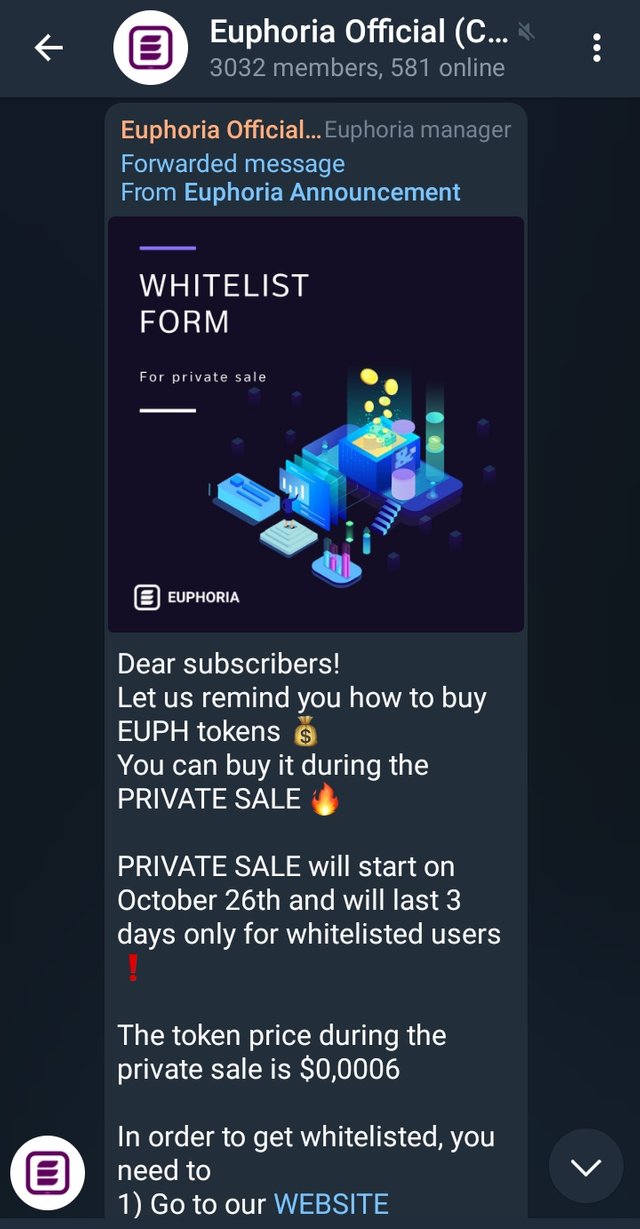
source
From the image above, we see a private sale of a token project coming very soon, precisely at the end of this year. The sale price is $0.0006. Let's visit the website for further information.
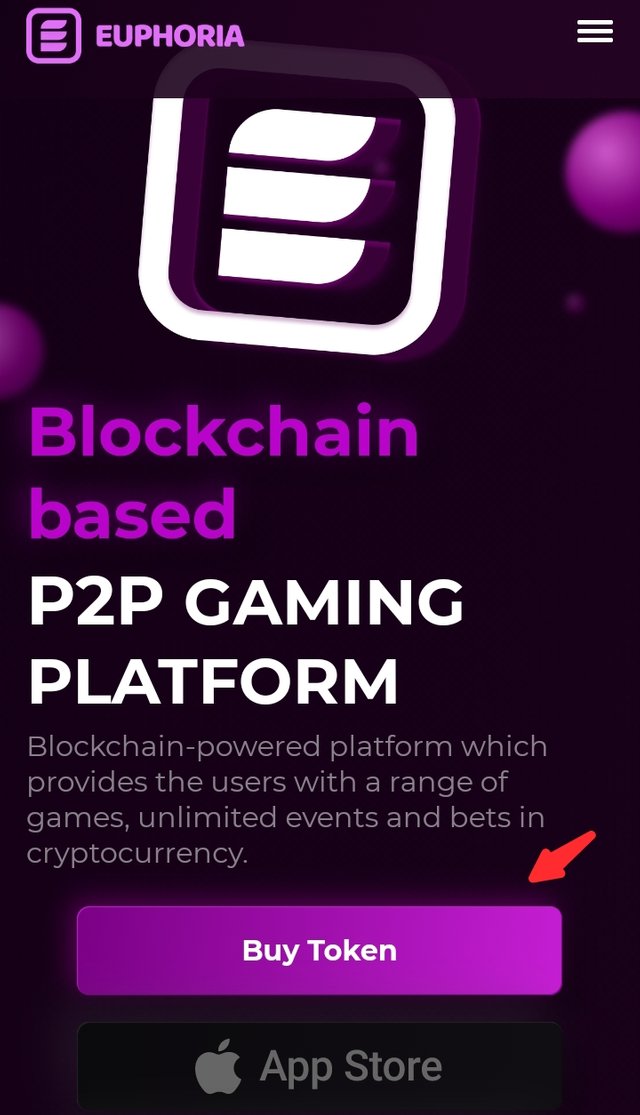
source
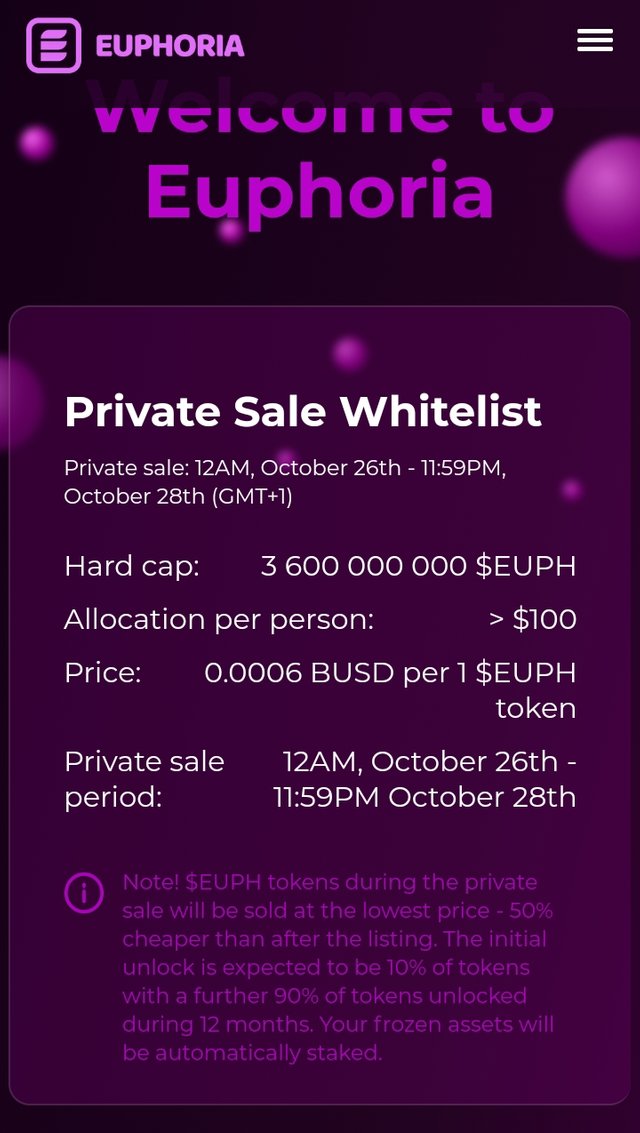
source
From the above images, we see that the coin that can be used to purchase this new token during the private sale is BUSD. 1 $EUPH = 0.0006 BUSD
Also, the maximum per person during the sale is >100 BUSD worth of $EUPH.
It is also stated that the private sale price is less than the after listing price by about 50% and 10% of the tokens will be available for the private sale.
LAUNCHPAD OF POPULAR EXCHANGES
Who wouldn't need a lift? Sure not some crypto startups who prefer to ride on the influence of exchanges to give their tokens a headstart. This crypto startups turn to Launchpads for their private/pre/public sales. Launchpads are used by exchanges seeking to do a fundraiser for a token or to allow investor acquire a token before it goes on to be listed.
One popular Launchpad is Binance Launchpad based on the BSC chain. On Binance Launchpad, users commit BNB and in return gets the new tokens. So when a crypto startup fancies the Binance star rating and wants to ride on their influence, they go to Binance Launchpad to host their private/pre/public sale.
When you go to participate in a token sale hosted on Binance Launchpad as an investor, first you need to commit some existing tokens based on what the sellers are requesting. Usually, it's BNB or BUSD. During distribution of the new tokens, you get the new tokens based on the percentage of your commitment to the total commitments of all investors combined.
Mathematically, the formula is given by
(Individual Commitments / Total Commitments) x Total amount of the new tokens offered on Launchpad

Q.4. Research about any recent (2021) successful ICO or IEO and give detailed information about the project. (Note: BETA token is excluded).

Currently, there's no ongoing project on the Binance Launchpad. But we can still study a completed project to see how it went. Let's consider the image below
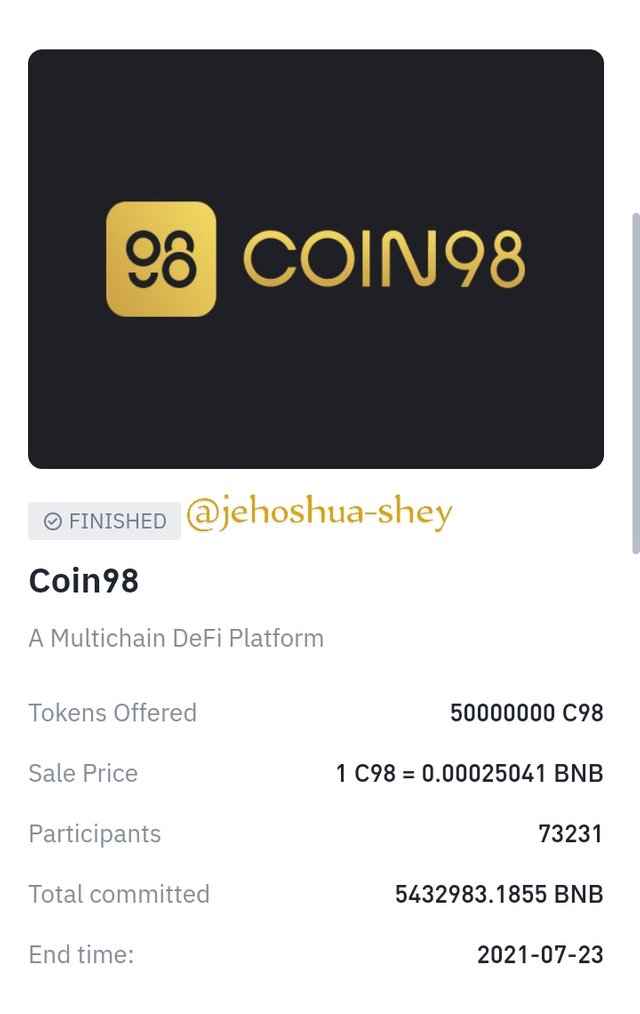
Above is the summary of the Launch activity for the C98 token on Binance Launchpad. As you can see, a total of 50M C98 were presented at the sales and a total of 5432983.1855 BNB were committed. Not all of this were used as there was a hard cap per user. The price of the token was
1 C98 = 0.00025042 BNB
Let's consider what the C98 project is all about, hopefully it's not a sporting tournament held in 1998.
REVIEW OF THE C98 PROJECT
C98 is a multipurpose DeFi platform that connects DeFi users to different DeFi services across multiple blockchains. It's a bridge between DeFi services on various blockchains and a Gateway to different different blockchains' DeFi products.
To accomplish this, C98 (which is short for Coin98) employs a robust suite of decentralized crypto products. They are Coin98 Wallet, Coin98 Exchange, and Space Gate.
Coin98 Wallet: Coin98 Wallet is a decentralized web 3 crypto wallet that supports multiple blockchains including Binance smart chain, Ethereum, Solana, Terra, Avalanche, Polygon, etc. Users using this wallet can send and receive tokens built on all these blockchains. The wallet is available on pc, ios and android.
Coin98 Exchange: Coin98 Exchange is a decentralized exchange that combines liquidity from different blockchains. It provides its users with full exchange services including swapping, staking, lending, borrowing, earning, etc. The benefits of using this exchange includes low slippages and industry standard best rates.
Space Gate: This is a cross-chain transfer service. Users can swap across multiple networks and can also make transfers. It supports ERC-20 tokens, BEP20 tokens, SPL tokens, etc.
C98 AFTER LISTING.
I was privy to this project but didn't participate. It went for 0.00025041 BNB at the public sale on Binance Launchpad. Shortly after, it was listed on Binance. Let's see how it progressed.
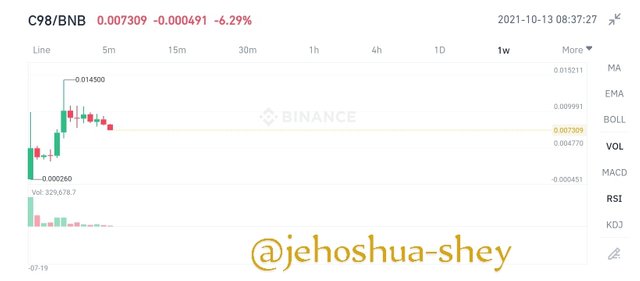
From the image above, at listing, it was worth 0.00026 BNB but it has since shot up to an ATH of 0.0145. Let's calculate the profit.
((0.0145 - 0.00026)/0.00026) x 100
= (0.01424/0.00026) x 100
= 54.7692 x 100
= 5476.92%
So buying Coin98 at public sale yielded upto 5476.92% in profits. Insane. Imagine if I had borrowed $100 to participate in this public sale, even if I was to payback with an interest of 50% after 6 months, I would have made a huge $5326.92 in profits.
That's what an investor can get when they participate in private/pre/public sales.

Q.5. Create an imaginary token. Write about the project including its use case. Develop an ICO which includes Private sales (3 stages) and Public sales (1). Note that: You are expected to explain what the funds are intended to be used for, your Private sale should have 3 stages, and specify the initial supply available, and the price you are issuing the token in each stage. Also, specify the price you are issuing the token at the Public sale phase (including the supply).

Now, this is going to be interesting.
My Imaginary token is called Jedi (JDI). It's going to be the primary native token of an imaginary Jedi blockchain
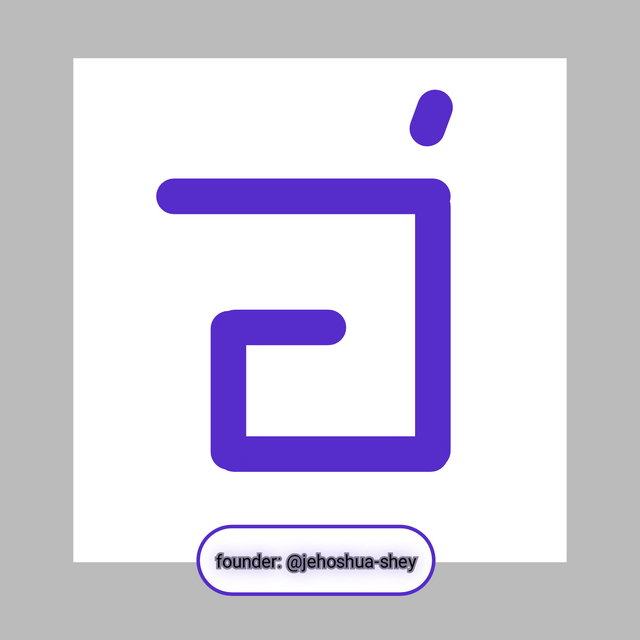
The Jedi blockchain is a PoS multi consensus, multi purpose blockchain. It is programmable runs an EVM (Ethereum Virtual Machine) and will be home to 5 native tokens including one stable coin - StableWan (STW) and the Jedi (JDI) token.
THE BLOCKCHAIN'S CONSENSUS
The blockchain will run on three main consensus mechanisms, which are Proof of Stake, Proof of History, and Proof of Brain. This is to enable the blockchain achieve scalability despite it multi-purpose functionalities. It is designed to be faster than Solana, with an estimate speed of upto 1500 TPS.
Proof of Stake is to enable decentralized governance of the blockchain as well as ensure scalability of the platform. It will be used for transaction verification and for making platform changing decisions.
Proof of History is to execute the timing of produced blocks or Verified transaction at a faster rate. Solana has shown that when time is hashed separately, time is saved and throughput is increases.
Proof of Brain is to enable the blockchaim have a growing loyal community who will be rewarded for content they create on the blockchain. It will also be involved in the creation of NFTs.
THE BLOCKCHAIN'S FUNCTIONALITIES
The multipurpose functionalities of the Jedi blockchain can be divided into three, Payments, Deployment of Smart contracts and Community platforms.
Payments
The blockchain will support payments primarily through its wallet called Alliance, so called because it will support multiple blockchain platforms including TRON, Ethereum, Solana, Polygon, Terra, Avalanche, Cardano, to name a few.
The primary token for payments on the Jedi blockchain is the LightSaber (LTS). It can be used wherever payments is needed on the blockchain.
Deployment Of Smart Contracts
How's the multi-whatever in this blockchain going to work without programmability? The blockchain will be equipped with innovative programmable functions potent enough to power the numerous dApps and smart contracts that will be built on the blockchain without diminishing the throughput, security and decentralization of the blockchain.
Thus the blockchain will power smart contracts and dApps. It will also support a community run ICO platform - New Planet, that will help in birthing new projects.
The primary tokens for powering smart contracts on the blockchain is the Droid (DRD). It can be used to power smart contracts and also has utilities in the community platforms.
Community Platforms
One of the uniqueness of this blockchain is that it rewards its community members by distributing tokens for quality content. It will power social platforms for social media interaction, videos sharing, blogging, corporate communications, etc.
The native token for this functionality is the Galaxy (GLX). It can only be used for activities on the community platforms.
Note that the GLX might be adopted for use in smart contracts and the DRD might be used as payments on smart contracts but the blockchain protocol will charge a fee for this. It will be higher than the conversion fee from GLX to LTS on the blockchain's DEX.
This fee will be used to improve various aspects of the blockchain. And by charging this fee, the LTS will be instituted as the preferred payment token.
This fee charge also applies to any other 'misuse' of tokens.
Each of these tokens serves as governance for their respective functionalities.
Now, let's consider our token of interest, the primary native token of the imaginary Jedi blockchain.
THE JDI TOKEN
The JDI is a multi purpose token. It can be used for any purpose served by any of the tokens without any fees attached. It is also locked up to generate any of the other tokens except the StableWan (STW)
The Jedi token can be used for governanc on any of the functionalities. It will have a maximum supply of 250,000,000 JDI. The initial token supply of the JDI token is 20% which is 50,000,000 JDI. This will he distributed in 4 rounds of private and public sales combined.
Round 1 (Private sale): This is the earliest round and here, the token will be sold for $0.1. 7,000,000 JDI will be available for this round. The money gotten from this round will be used to pay salaries to the development team who have been working on the project since inception. It will also be used to acquire hardware necessary for the launching of the blockchain.
Round 2 (Private sale):This round will be the next round after round 1. It should take place about 18 days after the first round. The token will be sold for $0.2. 10,000,000 JDI tokens will be available for this round. The money for this round will be spent on acquiring more hard ware and funding collaborations which will benefit the blockchain.
Round 3 (Private sale): This is the last round of private sale. It will take place about 8 days after the second round. The token will be available for $0.35 at this round and about 23,000,000 JDI will be available for this round. Money gotten for this round will be use to complete the test net and main net and for testing the blockchain.
After Round 3 of the private sales, the blockchain is ready to go live and the test net is available and operational. Demo activities can be done on the testnet and everyone can have a feel of what it will be like when the main net goes live.
- Round 4 ( Public sale): For the fourth Round, the token will be sold for $0.5 and will see about 10,000,000 JDI tokens provided. The money from this sale will be used to offset salaries, launch the blockchain, and get the JDI tokens listed on the blockchain.
For all the rounds, the sale will be done through the project's website.

Q.6. What are the criteria required for listing a token on CoinMarketCap. Is there a criteria for listing an asset on a Centralized Exchange? If Yes, use an exchange for your explanation in response to the question.

To get a coin listed on CoinmarketCap, there are some criteria to be met. These criteria are stated on the CoinmarketCap website however, they are summarized here.
LISTING COINS ON COINMARKETCAP
Priority Criteria
CoinmarketCap receives lots of listing request daily and so the prefer to prioritize request that meets a set criteria. To have your token listing request rank up their priority list, you should meet the following criteria
Information stated in the request should be complete, understandable, and well structured, with verifiable evidence.
Request should be submitted to the correct option (i.e tokens listing request should not be submitted under exchange listing request).
Tracked listing criteria
After meeting the priority criteria, you also have to prep your token request for consideration as tracked listing. For this, the crypto asset must meet the following criteria.
It must possess leverage cryptography, consensus mechanism or distributed ledgers, peer to peer technology, and smart contracts (optional).
It must function as a store of value, medium of exchange, unit of account, or decentralized applications.
It must possess a functional website and at least one block explorer.
It must be traded on a minimum of one exchange with substantial volume and the exchange must have a tracked listing status on CoinmarketCap. It must also be traded publicly.
it should have a project representative with whom the CoinmarketCap team can establish contact for clarifications whenever and wherever necessary.
Untracked Listing
For tokens that were unable to meet the tracked listing criteria, they could possibly be listed as untracked listing. This type of listing is for tokens that were considered to be strong in some evaluation areas but fell short in the tracked listing.
Delisting Policy
After being listed on CoinmarketCap, if the token performs 'well' enough to meet the criteria, it can also be delisted. The criteria for delisting on CoinmarketCap is as follows
Low volume of suspicious trading activities
Halting of development on the project
Misleading applications
Project owners/issuers or project itself breaches territorial laws and regulations
Awesomely poor implementation of the projects development or poor reception of the project's development by the project's community.
For more information and references on CoinmarketCap listing criteria, check here
LISTING ON BINANCE
To get a coin listed on Binance, you simply apply.
Types of Application
If it's a token in it's early stage, you apply for listing via Binance Launchpad.
If it's been on for a while and is already circulating in the market, you apply for direct listing.
If the project is yet to issue a token, you can apply for Launchpool.
Listing Criteria
Provide weekly updates on your project to the Binance team and the project's community.
Add BNB/BUSD to the project's ecosystem
Promote Binance to the project's community.
Things to Avoid to Prevent Disqualification
Avoid making contact of any sort with CZ - Binance CEO at any point during review with respect to your listing request.
Don't request for any contact person from the Binance review team.
Do not disclose listing information to the project's community before Binance official announcement
Do not claim to have listing agreements with Binance.
Do not force Binance to list your token by spreading Fear Uncertainty and Doubt (FUD)
Do not incite your project's community to shill the token to Binance for listing.
Binance Evaluation Process
Binance considers the following when evaluating a token listing request
Product viability
User adoption
Project team management of adversity.
Binance will contact the applicant by email with a valid digital signature and finger print if the application is successful. Payments will also be made for the listing which Binance says 100% goes to Binance Charity.
For more information on Binance listing, check here

CONCLUSION

Tokens undertake a very delicate and diligent journey to get to major exchanges and prominence in general. There private sale, which includes a selected few, gives the most return on investment and could be in stages, there's pre sale which comes just after private sale and also gives huge profit, there's public sale which comes just before listing and also gives good profits.
Listing on major exchanges like Binance has to take a well detailed and transparent approach. There ought to be fairness and no form of inciting on the part of the token's team. CoinmarketCap is no different. To get a token listed there, a lot of documents needs to be present and they should be independently verifiable. A contact person should also be available.
It is advised to list on an exchange first before going to list on CoinmarketCap as a presence on an exchange like Binance gives an edge in application for listing on CoinmarketCap.
Thanks for reading.
Cc: @fredquantum
Downvoting a post can decrease pending rewards and make it less visible. Common reasons:
Submit
nice article . keep going
Downvoting a post can decrease pending rewards and make it less visible. Common reasons:
Submit